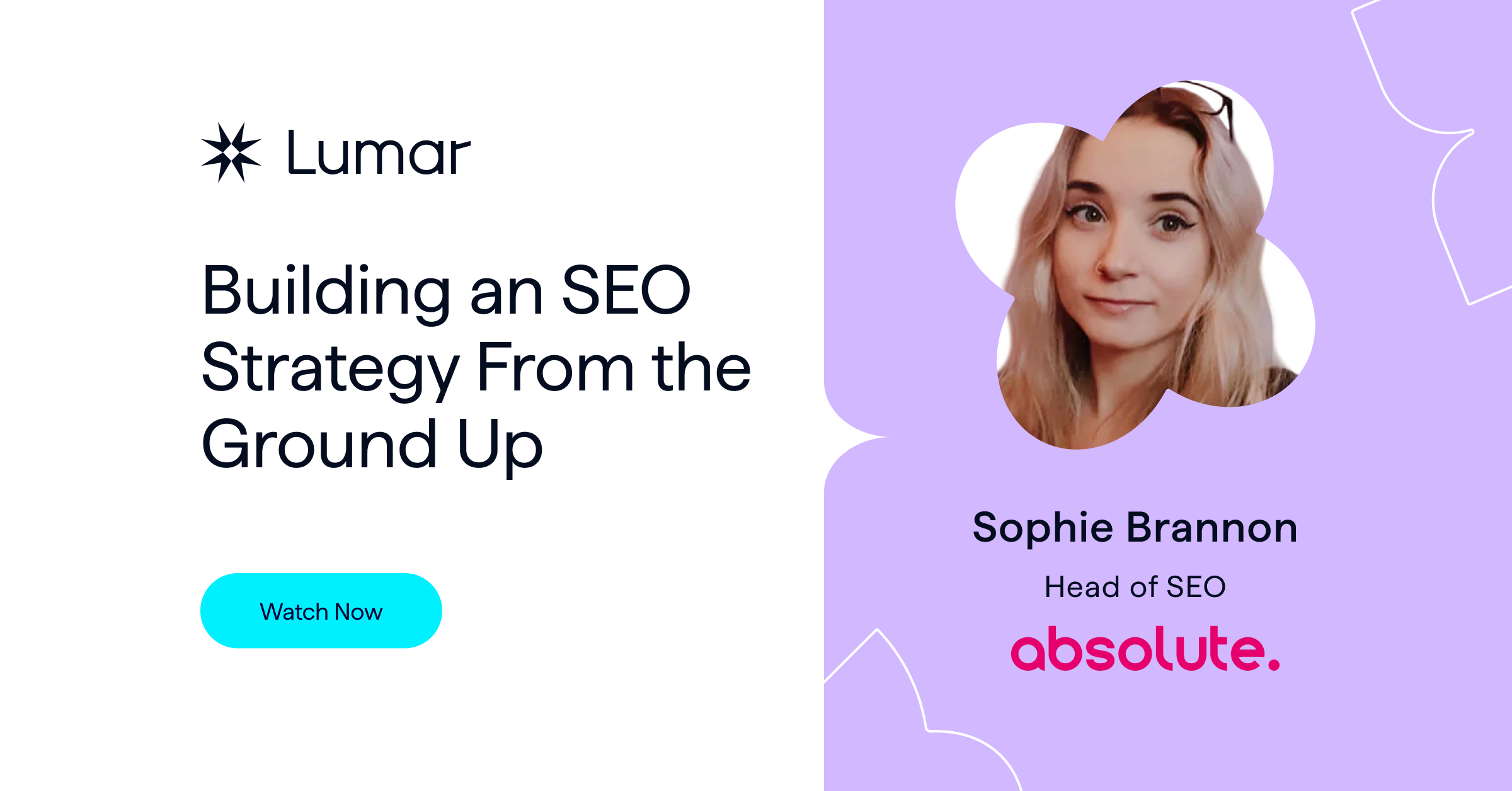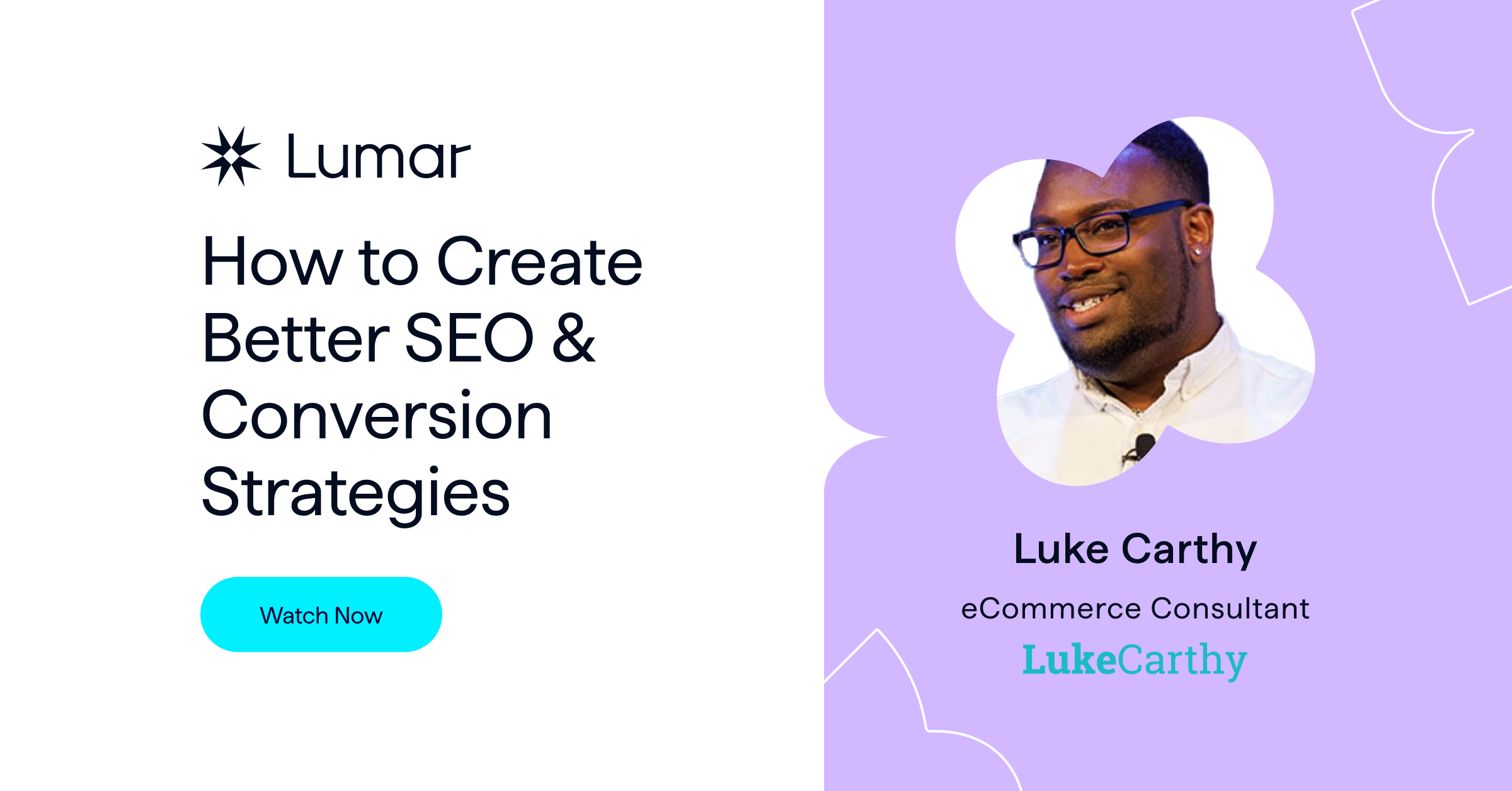In 2020, eCommerce has grown on an exponential scale. As consumers faced lockdowns and high street stores shut down, people turned to buy what they need online.
With countries across the globe beginning to lockdown again, this trend is unlikely to slow. And even after the pandemic, our collective experiences will likely result in a universal eCommerce-first mindset.
But with almost every retail business on the planet now trying to optimize their sites to make up for money lost on the high street, competition is understandably fierce. Getting customer experience and SEO right, especially with Black Friday and Christmas soon upon us, is essential.
So, what’s the current state of play in eCommerce, how are consumers changing, and what’s the best way for brands to approach eCommerce in 2020 and beyond?
In our latest webinar hosted by Jon Myers, eCommerce Consultant, SEO & CRO Specialist Luke Carthy, answers these vital questions.
What’s the current state of play in eCommerce? The rise of D2C
One of the biggest changes we’ve seen in eCommerce this year is the rise of direct to consumer (D2C) models.
There are two that immediately come to mind.
First, US brand Fritolay. The crisp and snack company (known as Walker’s in the UK) quickly changed tack earlier this year by building Snacks.com: a D2C website that enabled consumers to order their favorite products directly to their door.
This was, above all else, a move that had to be made. Supermarkets were unable to obtain stocks due to supply chain issues, people were in some states unable to visit supermarkets, and others refused to visit public places due to the COVID risk. But though Fritolay’s D2C service was born of necessity, it’s still a great play.
Second, Heinz. In April 2020, a month into the pandemic in the UK, Heinz launched their D2C Heinz to Home service. What’s great about this approach is how simple it is, and it goes to show that eCommerce doesn’t have to be complicated.
Yes, there aren’t a huge number of products available. But they’ve used Shopify to plan and launch a slick-looking, simple eCommerce presence in a matter of weeks.
And it’s worked. Heinz to Home picked up a tonne of press coverage, and its service has become incredibly popular. If the second wave really does break loose, Heinz to Home could have an even bigger place in the market.
Following these examples, we’re going to start to see big brands do this more and more.
There’s now less resistance to pumping cash into eCommerce
What we’re also seeing, which is great for us as digital marketers, is less resistance to pumping cash into eCommerce.
Companies are taking the cash they were set to invest in high street refurbishment, press campaigns, and offline campaigns, and pumping that capital across their digital channels. A greater percentage of businesses’ overall budgets are also being allocated to eCommerce and digital.
This trend will likely grow in Q4 this year.
For consumer brands, Q4 is the biggest, make-or-break quarter of the year. With Black Friday and Christmas upon us, and high streets shut, or shutting, it’s forcing businesses to think — creating a fight-or-flight response. Smart retail brands are choosing the ‘fight’ option, and rapidly investing in digital to help ensure their survival.
It remains to be seen how this turns out, but it’s going to be interesting to see what brands do for the remainder of this year.
eCommerce-first customer approach and mindsets
On a consumer level, we’re starting to see customers approach shopping with an eCommerce-first mindset.
Whereas once we would spontaneously drive out to Argos or B&Q, we’re now likely to search and shop online for the items we need. Whether the shift is due to national lockdowns, a change in habits over time, or a combination of both, the trend is clear: we’re becoming eCommerce-first.
In 2020, Q4 is going to look very different from a year ago.
There are going to be fewer festivities, fewer Christmas lights, and fewer Christmas markets. As a result, there’s less reason for people to go out in the cold to shop on the high street. Especially with a second wave looking increasingly likely.
The result? More people will do their Black Friday and Christmas shopping online.
The shift online is, of course, a trend that has developed over the last decade. But this year, the move towards shopping online is going to spike even more dramatically.
What’s the best way for brands to approach Q4 and beyond?
Optimize your campaigns. Make it happen. Sweat every single campaign and touchpoint and make it work. This year, there’s no room for error. You don’t have the same high street presence anymore, and it’s going to become even more competitive online.
Let’s look at some examples where brands could improve that we can learn from. First, The Perfume Shop. Every year The Perfume Shop promotes Black Friday deals. But last year, when you searched ‘Black Friday’ on their site search, it returned just three products.
We know they had more products in their Black Friday Deals. So why didn’t they show up? They failed to redirect to the campaign pages. This year, mistakes like these can’t be made if businesses want to make the most out of online sales.
Another example: Homebase. Homebase is a company that hasn’t always participated in Black Friday. Because of this, when Luke searched for ‘Black Friday’ on their site last year, it returned a ‘no results’ page.
This presents a negative customer experience, but it can also be easily fixed. If, like Homebase, you don’t run Black Friday campaigns, have a page that states why you’re not doing Black Friday, and show alternative deals or products that your customers are likely to be interested in.
If brands want to make money in Q4 2020 and beyond, they need to provide better customer experiences online.
Recycle the same URLs for landing pages and campaigns
This has been preached time-and-time again by professionals in the digital space, but it’s important to state again: recycle the same URLs for landing pages and campaigns.
Rather than having ‘/blackfriday2020’ or ‘/christmas2020’, use ‘/blackfriday’ and ‘/christmas’ and reuse them every year.
Why? Because this way you can build and retain the authority of a page as the years progress, and you won’t have multiple pages appearing in the SERP when people search for your brand’s seasonal events and campaigns.
Don’t forget to optimize site search queries
Whether it’s Black Friday, Christmas, Coronavirus, PS5, Click and Collect, whatever your most important queries are, you need to research and analyze your site search insights, and build the optimal experiences that your customers need and want.
Launch your landing pages early and keep them live
This is a big deal. Black Friday may be a few weeks away, but your landing page should be live already. Even once the event and promotions have finished, you should keep your landing page live.
Why? Because people will still access it. And this presents an opportunity to upsell your other products, sales, and campaigns throughout the year.
If people search for your brand name and ‘Black Friday’ in December, you can use this page to tell them to go and check out your Christmas sale. If they search during 2021, you can send them to your seasonal sales or promotional products.
You’re always going to get traffic to these pages, even out of season. So it’s better to capitalize on this traffic and direct people towards purchasing your products, rather than giving potential customers a solid reason to bounce.
Luke uses Argos as an example of how to do this right:
A final point
As we’ve touched on throughout, eCommerce is becoming increasingly important for businesses. The world has changed, and consumers have changed their behavior with it.
As a result, brands that want to succeed in the foreseeable future will have to adopt an eCommerce-first approach.
Getting it right from an SEO and a customer experience perspective is no easy feat. But hopefully, the key insights from Luke’s webinar will go some way to helping you achieve this.
Follow Luke on Twitter: @MrLukeCarthy





